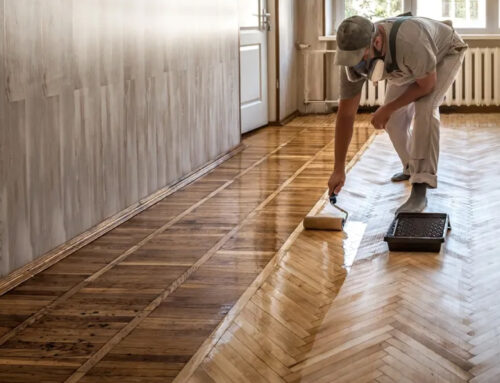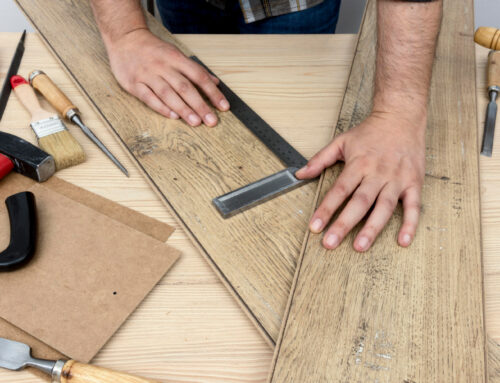Picking the right sandpaper grit for hardwood floors makes all the difference between a beautiful finish and a disappointing one. The grit number tells you how rough or smooth the sandpaper is. Lower numbers like 24 to 36 are rougher and remove more material. Higher numbers like 80 to 120 are smoother and perfect for finishing. Most floor projects need three or four different grits, starting rough and ending smooth.
Why Grit Choice Matters for Hardwood Floor Sanding?
Using the wrong sandpaper grit damages your floors and wastes your time. The right grit sequence removes old finishes quickly while getting the surface ready for new coatings.
How Sandpaper Grit Impacts Finish and Longevity?
Sandpaper grit for hardwood floors directly affects how your stain soaks in and how long your finish lasts. Rough grits like 24 to 40 remove material fast but leave deep scratches. Smooth grits like 80 to 120 create surfaces that let stain absorb evenly and help the finish stick better.
When you skip grits or use sandpaper that’s too rough, you create visible scratch marks that show through the stain. These scratches become permanent once you put polyurethane or other coatings on top. On the flip side, starting with sandpaper that’s too smooth wastes hours because it removes material slowly.
The grit sequence also affects how the wood fibers line up. Each smoother grit removes scratches from the last pass while smoothing the wood fibers. This creates an even surface that reflects light uniformly and accepts finish consistently.
Common Mistakes with Grit Selection
Three mistakes ruin most DIY floor sanding jobs.
- Starting Too Smooth
Starting too smooth means beginning with 60 grit on floors with thick polyurethane or paint. This wastes sandpaper and time. Rough grits like 24 to 36 cut through old finishes much faster.
- Skipping Grit Steps
Skipping grit steps happens when you jump from 36 grit directly to 80 grit. This leaves deep scratches that smoother sandpaper cannot remove. Each grit should be no more than 20 to 30 numbers apart from the next.
- Sanding Too Much with Smooth Grits
Sanding too much with smooth grits means making too many passes with 100 or higher grit. This burnishes the wood fibers and stops the stain from soaking in. The result is blotchy, uneven coloring that looks unprofessional.
Understanding Sandpaper Grits for Wood Flooring
Sandpaper grit for hardwood floors ranges from 24, which is very rough, to 120 or higher, which is very smooth. The number represents how many abrasive particles fit in each square inch. Higher numbers mean smaller particles and smoother sanding.
Sandpaper Grit Scale Explained (Coarse, Medium, Fine)
The sandpaper scale breaks down into three main categories.
- Coarse grits from 24 to 40 have large abrasive particles that remove material quickly. These grits level uneven boards, get rid of deep scratches, and strip old finishes. They leave visible scratch patterns that need more sanding.
- Medium grits from 50 to 60 have mid-size particles that smooth scratches from coarse sanding while still removing material. These transition grits prepare floors for smooth finishing passes.
- Fine grits from 80 to 120 or higher have small particles that create smooth surfaces ready for staining and sealing. These grits remove previous scratch patterns without cutting deep into the wood.
When to Use Coarse Grit (e.g., 24 to 36)
Use 24 to 36 grit for heavy material removal on badly damaged floors. These grits work best for thick polyurethane or paint layers, deep gouges and scratches that go deeper than 1/16 inch, uneven boards that need leveling, and floors with multiple previous finish layers.
Start with 24-grit only on extremely damaged floors. Most projects begin with 36-grit, which removes finishes well without taking off too much wood. Use coarse grits on the first pass only, then move to smoother grits.
When to Use Medium Grit (e.g., 40 to 60)
Medium grits work as transition stages between coarse and fine sanding. The 60-grit stage is super important because it removes deep scratches while creating a semi-smooth surface. Many professionals say 60-grit is the most important sanding stage since it determines the final quality.
Use 40 to 60 grit to smooth scratches from 24 to 36 grit passes, remove moderate finish buildup, even out grain raised by coarse sanding, and prepare floors for final fine sanding.
When to Use Fine Grit (e.g., 80 to 120 or Higher)
Fine grits create the final surface that accepts stain and finish.
- 80-grit does final smoothing before staining. This grit removes 60-grit scratches while keeping a slight texture for the stain to grab onto.
- 100-grit creates extra-smooth surfaces for natural or light stains. Use this when flaws must be minimal.
- 120 grit gives ultra-smooth finishing on exotic hardwoods or before clear coatings. This grit creates glass-like smoothness.
Never go above 120 grit on floors you plan to stain. Higher grits burnish the wood and stop stain from soaking in properly.
Step by Step: Choosing Grit for Each Sanding Stage
Professional floor sanding follows a four-stage process using smoother and smoother sandpaper grit for hardwood floors at each step.
First Rough Sanding
Start with 36 grit for most refinishing work. This grit strips away polyurethane, varnish, and surface damage in just 2 to 3 passes.
Put 36-grit on your drum sander. First, make diagonal passes across the floorboards at a 45-degree angle. This cuts through old finish faster. Then sand parallel to the boards, going forward and backward in straight lines.
Only use 24-grit if your floor has multiple thick finish coats, deep scratches from old sanding, or boards that are badly warped. You’re done with this stage when all the old finish is gone and the wood looks the same color all over.
Middle Smoothing Stage
Switch to 60 grit once the old finish is gone. This is a really important step. It removes those 36-grit scratches and smooths down the raised wood grain.
- Make 2 to 3 passes with 60 grit, always going with the grain
- Overlap each pass by 2 to 4 inches so you don’t leave lines
- Wipe the floor with mineral spirits to check your work (scratches show up as white lines)
Don’t rush this stage. Taking your time here prevents scratches from showing through your final finish.
Final Smooth Sanding
Finish your sanding with 80 to 100 grit. Most people use 80-grit for this last pass. Go slower here and press lighter than before. Make at least 2 passes and overlap them carefully.
What you’re doing is removing all the scratches from before while leaving just enough texture for the stain and finish to grab onto. Planning to use a natural or light finish? Add a 100-grit pass. Going with a dark stain? You can skip 100 grit since darker colors hide small imperfections.
Between Coat Sanding
After your first coat of polyurethane dries, give it a light sanding with 120-grit screens or very fine sandpaper. This roughens the surface just enough so the next coat sticks better.
Use 120 to 180 grit for this step. One gentle pass knocks off dust bumps and creates texture without cutting through your finish. Make sure to vacuum everything really well afterward. Any leftover dust will mess up your next coat.
Sandpapers and Abrasives We Offer at Rustic Wood Floor Supply
Rustic Wood Floor Supply provides professional-grade abrasives for every sanding stage. Our selection makes sure you get proper sandpaper grit for hardwood floors without trial and error. Check out our full range on our sandpaper collection page.
Professional Sanding Belts: For Fast Stock Removal
Our premium sanding belts fit all major drum sanders and deliver consistent cutting performance.
- Available in 24, 36, 40 grit for aggressive material removal
- 50, 60 grit for mid-stage smoothing
- 80, 100 grit for final finishing
Belts feature aluminum oxide abrasives that resist clogging and stay sharp through multiple rooms. Heavy cloth backing prevents tearing during tough projects.
Our Norton Red Heat Sanding Belts are a top choice among professionals. These premium ceramic belts come in all grits from 24 to 120 and are known for producing consistent, uniform scratch patterns. The thick cloth backing holds together beautifully and keeps your tracking straight throughout the entire job.
Drum Roll Sandpaper: For Large Surface Areas
Drum roll sandpaper wraps around drum sander cylinders for efficient, large area sanding. Our rolls provide consistent grit throughout the roll length, anti-static backing that reduces dust sticking, and availability in all standard grits from 24 to 100.
Each roll covers roughly 400 to 600 square feet, depending on floor condition and which grit you pick.
Premium Sanding Discs and Screens: For Edgers and Buffers
Edge sanding needs specialized discs that match drum sander grits.
Edger discs come in 24 to 100 grit in 7 and 8-inch sizes for edge sanders. Fiber backing handles the aggressive cutting action of edger machines. Sanding screens in 100 to 180 grit mesh work great for buffing machines. Open mesh design prevents clogging during intercoat sanding.
Sanding discs in 80 to 120 grit come with PSA (pressure sensitive adhesive) and hook and loop backing for random orbital sanders.
Pads and Specialty Abrasives: For Intercoat, Corners, or Stairs
Hand sanding needs flexible abrasives that bend to fit the detailed areas.
- Sanding sponges in 80 to 120 grit work perfectly for corners and edges
- Abrasive pads in fine and ultra-fine grades are ideal for hand-sanding stairs
- Detail sanders with triangular sheets reach tight spaces
- Contour sanders with flexible pads handle curved surfaces
These specialty products finish areas that machines cannot reach, making sure your whole project looks uniform.
For intercoat abrasion between finish coats, our 3M Maroon SPP Buffer Pads are perfect for the job. These 16-inch pads work great for removing raised grain and smoothing wood surfaces between polyurethane coats. They’re around 320 grit equivalent and attach easily to buffer machines.
Pro Tips for Best Results
Getting professional results takes more than picking the right grit. These techniques help you get the most from sandpaper grit for hardwood floors.
How to Avoid Visible Scratch Patterns?
Three techniques prevent visible scratches. Keep belts and discs clean by tapping belts against a hard surface every few passes to knock off stuck wood dust. This keeps them cutting well and reduces how deep scratches go.
- Maintain steady pressure because pressing too hard creates gouges, while pressing too lightly wastes time.
- Let the machine weight do the work and add only slight downward pressure.
- Overlap passes properly by making sure each sanding pass overlaps the last one by 2 to 4 inches. Gaps between passes create visible lines that show through the finish.
When to Switch to the Next Finer Grit?
Change to smoother grit when the current grit stops removing material well, visual inspection shows an even scratch pattern across the whole floor, and mineral spirits show consistent wood color without dark spots.
Check sandpaper often because dull belts or discs burnish wood instead of cutting it. Replace them right away when the cutting action gets worse.
Dust Management and Cleaner Workspaces
- Use vacuum attachments because drum sanders with dust collection bags catch 80 to 90 percent of dust. Empty bags are often used to keep the suction strong.
- Sweep between grits by removing all dust before switching to smoother grits. Rough grit dust contaminates fine sandpaper and makes it less effective.
- Vacuum walls and trim since dust settles everywhere. Vacuum walls, baseboards, and window sills before applying the finish to prevent contamination.
Getting More Life from Each Sheet or Belt
Make your sandpaper last longer with these practices. Clean belts and discs regularly with a rubber cleaning stick. Avoid pressure that creates too much heat. Store unused sandpaper in sealed containers to stop moisture from getting in.
Remove staples, nails, and debris before sanding to prevent early wear. Quality sandpaper costs more at first but lasts 2 to 3 times longer than cheap grades.
Get the Right Grit, Get the Right Finish
Getting the grit sequence right is the secret to professional-looking hardwood floors. Start with 36 grit to strip away old finish, move through 60 grit to smooth everything out, and finish with 80 grit for a stain-ready surface. Each step prepares the wood for the next, building toward that beautiful final result you want.
Ask Our Experts for a Tailored Supply List for Your Project!
Rustic Wood Floor Supply gives free consultation to match abrasives with what your project needs. Our experts consider the current floor condition, the type of existing finish, how many square feet and the room layout, the wood species and board width, the final look you want (natural, stained, or sealed), and the sanding equipment you have available.
Contact us with your project details, and we will recommend specific grits and how much you need. This gets rid of guesswork and stops costly mistakes from picking the wrong grit.
Browse Sandpaper Collection: (678) 691-0533
Frequently Asked Questions
What grit sandpaper should I use to start sanding hardwood floors?
Start with 36-grit sandpaper for hardwood floors for most refinishing projects. This removes old finish and surface damage well. Use 24-grit only on really damaged floors with multiple thick finish layers or deep gouges.
How many grits do I need to use when refinishing a hardwood floor?
Most hardwood floors need three to four grit progressions. Use 36 grit for finish removal, 60 grit for smoothing, and 80 grit for final finishing. Add 100 grit for natural finishes or 120 grit for sanding between polyurethane coats.
Can I skip grits, or should I sand with each grit in sequence?
Never skip grits when sanding hardwood floors. Each grit removes scratches from the pass before it. Jumping from 36 grit to 80 grit leaves deep scratches that smoother paper cannot remove. Move forward step by step with grits no more than 20 to 30 numbers apart.
What grit of sandpaper is best for removing old finish or deep scratches?
Use 24 to 36 grit sandpaper for hardwood floors to remove old polyurethane, varnish, or deep scratches. The 36 grit handles most projects well, while the 24 grit tackles really damaged floors. Always follow coarse grits with smoother and smoother grits for smooth results.
Which grit sandpaper do I use for the final sanding pass before staining or sealing?
Use 80-grit for the final sanding pass before putting on stain or sealer. This creates smooth surfaces with slight texture, so the finish sticks properly. Think about using 100 grit for natural or light finishes, but avoid going smoother than 120 grit before staining.
Author Profile
- I have worked in hardwood flooring for the last 8 years. Use to run a company of residential crews as well as a company with gym flooring. If you need floor installation or refinishing help, I should have an answer or at least get you in the right direction.
Latest entries
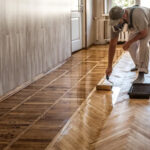 FlooringDecember 10, 2025Wood Floor Restoration in Atlanta: What Affects the Cost
FlooringDecember 10, 2025Wood Floor Restoration in Atlanta: What Affects the Cost FlooringDecember 8, 2025Top 6 Wholesale Hardwood Flooring Solutions for Your Home & Office – Boise, ID
FlooringDecember 8, 2025Top 6 Wholesale Hardwood Flooring Solutions for Your Home & Office – Boise, ID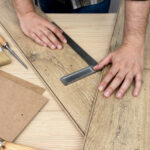 FlooringNovember 25, 2025What Engineered Hardwood Flooring Will Last Longest?
FlooringNovember 25, 2025What Engineered Hardwood Flooring Will Last Longest?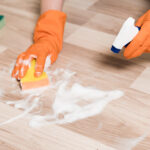 FlooringNovember 22, 2025Best Wood Floor Cleaner Liquid for Hardwood Flooring
FlooringNovember 22, 2025Best Wood Floor Cleaner Liquid for Hardwood Flooring

